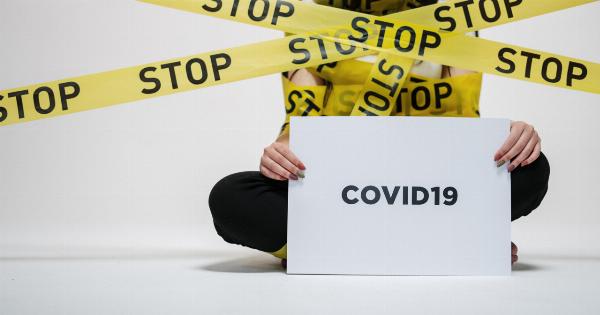Wearing masks has become an essential part of our lives since the coronavirus pandemic emerged. Masks offer a certain level of protection against the virus and are considered a crucial preventive measure.
However, there are specific situations where it may be appropriate to take off your mask for various reasons, such as comfort, safety, or communication purposes. In this article, we will explore when you should consider removing your mask based on expert guidelines and recommendations.
1. Alone in a well-ventilated space
When you find yourself alone in a well-ventilated space, especially if it is your own home or a well-ventilated office cubicle, you can safely remove your mask.
In this scenario, the risk of coming into contact with the virus is significantly reduced since there are no other individuals nearby to potentially transmit it. Remember, proper ventilation is also critical to ensure a lower risk of viral particles lingering in the air.
2. Eating and drinking
It is impractical to wear a mask while eating or drinking since it obstructs the mouth.
You can remove your mask while actively consuming food or beverages but ensure that you maintain proper hygiene measures such as washing your hands before and after eating and drinking. It is advisable to maintain physical distance from others and put your mask back on as soon as you have finished.
3. Engaging in outdoor activities with social distancing
Outdoor settings generally offer better ventilation and more space for social distancing compared to indoor spaces.
If you are engaging in outdoor activities where it is possible to maintain a safe distance from others, such as walking, jogging, or hiking, you may consider removing your mask. However, it is crucial to be aware of your surroundings and put your mask back on if you find yourself in a crowded area where maintaining distance becomes challenging.
4. When communication is essential
Wearing masks can impact effective communication, especially for individuals who rely on lip-reading or facial expressions. In situations where clear communication is necessary, consider removing your mask momentarily while maintaining a safe distance.
This can be particularly important for individuals with hearing impairments or those who communicate non-verbally. However, be sure to adhere to public health guidelines and mask-wearing when not actively communicating.
5. While in your personal vehicle or private space
When you are alone or only with members of your household in your personal vehicle or private space, such as your home or backyard, you can safely remove your mask.
Since you have control over who enters your personal space, the risk of exposure to the virus is significantly reduced. However, if you have guests or individuals who do not live with you, it is advisable to follow guidance and wear masks to protect everyone’s well-being.
6. Medical conditions or difficulty breathing
Some individuals may have medical conditions or specific circumstances that make wearing a mask challenging or dangerous.
For instance, individuals with severe respiratory issues or those who experience difficulty breathing while wearing a mask may need to remove it. If you fall into this category, consult with your healthcare provider for personalized guidance on alternative measures to protect yourself and others.
7. In certain outdoor gatherings with precautions
In certain outdoor gatherings where there are stringent safety precautions in place, such as limited attendance, social distancing measures, and regular sanitization, removing your mask may be permitted.
However, always follow local guidelines and recommendations, and avoid crowded gatherings or events where maintaining a safe distance is not possible.
8. Based on specific workplace guidelines
Workplace guidelines may vary depending on the nature of the job, industry, and local regulations.
Some workplaces have established protocols that allow for mask removal in designated areas or situations as long as social distancing and other safety measures are in place. Familiarize yourself with your workplace’s guidelines and ensure you follow them diligently to protect yourself and your colleagues.
9. When advised by healthcare professionals
There may be specific instances where healthcare professionals or authorities advise the removal of masks, such as during certain medical procedures or tests.
If you receive such advice from a reputable healthcare provider, it is essential to follow their instructions carefully. Healthcare professionals are equipped with the necessary expertise to assess the risks and benefits in such situations.
10. When recommended by updated guidelines
Lastly, always remain updated with the latest guidelines and recommendations provided by local health authorities and reputable organizations such as the World Health Organization (WHO) and the Centers for Disease Control and Prevention (CDC).
As the understanding of the virus evolves, guidelines may change to adjust to new research and developments. Stay informed and adapt your mask-wearing practices accordingly.
In conclusion, wearing masks is generally crucial for minimizing the spread of COVID-19 and protecting ourselves and others.
However, there are specific situations where mask removal may be appropriate, such as when alone in a well-ventilated space, while eating or drinking, engaging in outdoor activities with social distancing, or when communication or health conditions require it. Nevertheless, it is essential to remain updated with the latest guidelines, follow local regulations, and prioritize the health and safety of yourself and those around you.



























